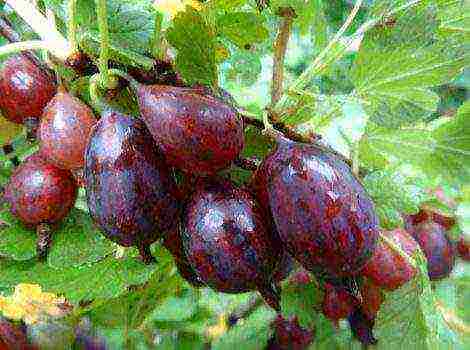Content
- 1 Juicy peach variety
- 2 Varieties and their description
- 3 Self-fertilized, self-fertile peaches: Inka, Vulcan, Harnas, Golden Jubilee
- 4 Groups of varieties
- 5 The best varieties and their description
Peach is a short-lived plant... It is distinguished by its rapid entry into the fruiting phase, intensive growth.
Peach buds have the ability to quickly awaken and release young shoots. The crown grows and if it is not thinned out, starting from the second year, then the yield will decrease.
From the fourth year, the peaches will become small and misshapen. Young trees begin to bear fruit in the second year after planting. With good care, they can give a crop in the first year, with autumn planting.
But this should not be allowed. Better to let the plant develop. You will collect a small crop, but time will be spent, and the plant will lose its strength.
Table of contents
- Juicy peach variety
- Varieties and their description
- Ripen early: Kiev Early, White Swan, Grisborough and Redhaven, Morettini
- Medium ripening: Collins, Cardinal, Golden Moscow, Sibiryak, Saturn, Kremlin, Donskoy
- Late, frost-resistant: Fury, Frost, Veteran
- Self-fertilized, self-fertile peaches: Inka, Vulcan, Harnas, Golden Jubilee
Juicy peach variety
In the past, gardeners dreamed of peaches that can be grown in all regions of the country, not just in the south.
Today, their dreams have come true: breeders have developed many interesting winter-hardy, frost-resistant varieties with different fruiting times, fruit shapes and taste.
Peach trees are divided into four groups (depending on the shape of the fetus):
- Real peach is a plant with pubescent fruits.
- Nectarine or bare peach.
- Potanin's Peach (Potanin's Almond).
- Fergana peach or fig (flattened fruit).
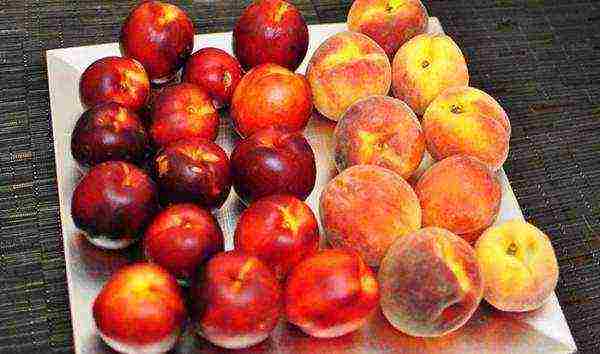 Peach trees are divided into four groups depending on the shape of the fruit.
Peach trees are divided into four groups depending on the shape of the fruit.
The timing of fruit ripening, the flowering period - it all depends not only on the area where the tree is grown, but also on the characteristics of the variety:
- Early maturing varieties give off the first fruits from July to August.
- Mid-season enter the fruiting phase in early August and delight with the harvest until September.
- Late peaches ripen in autumn: September, early October.
Which variety is best suited for a plot or garden depends on the climatic features of the area. It is important to choose plants so as to stretch the fruiting season for the whole season.
The yield of the plant depends on the correct choice of the variety. When buying a seedling, you need to pay attention to several important points, we give their description:
- Where did the seedling come from?... If the nursery is located in a different strip, then the seedling may die in the first year after planting or it will constantly freeze. The variety should be zoned, and the nursery should be in the same climatic zone (preferably even in the same region) where the tree will grow.
- Inspection of the scion site... It should be smooth and even, without bumps and hardened juice.
- Plant root system should have a fibrous shape. A root in one trunk is not good.
Annual seedlings take root better and delight with the harvest faster. When buying, it is better to focus on them, but choose strong, healthy plants, and not frail twigs.
Varieties and their description
Ripen early: Kiev Early, White Swan, Grisborough and Redhaven, Morettini
The peculiarity of early maturing varieties is that they quickly enter the fruiting phase. Two-, three-year-old seedlings are already producing a small harvest. Yields peak in the fourth to fifth year after planting.
When choosing early maturing varieties, it is better to focus on plants that have a low, spreading crown. They are easier to care for and shape during the growth period. Shorter trees are also easier to harvest.
Among the representatives of this group, varieties deserve special attention Kiev Early, White Swan and Redhaven.
Redhiven's crop peaks at 11 years of age. More than one hundred kilograms of fruits are harvested from one tree.
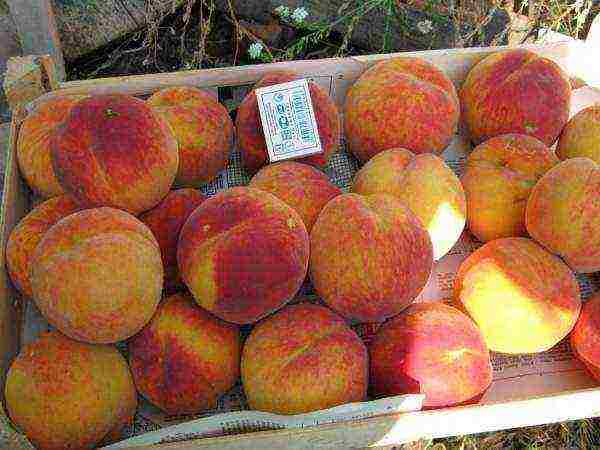 The best early varieties of peaches: Kievsky Early, White Swan, Grisboro and Redhaven, Morettini
The best early varieties of peaches: Kievsky Early, White Swan, Grisboro and Redhaven, Morettini
Each variety of early peach is good in its own way and has a lot of advantages.
Benefits of early peach varieties:
- form a wide crown no more than 5 meters high;
- plants bloom in April-May;
- they enter the fruiting phase quickly: in the fourth year after planting the seedling;
- fruiting is extended from July to August;
- it has a high yield, aromatic and tasty fruits.
The first fruits appear on a mature, well-formed tree. This cannot but affect the yield: from a six-year-old tree, with proper care, up to 60 kilograms of peaches can be harvested.
Another prominent representative of this group is Grisborough variety... It is distinguished by medium vigor, but, unlike the aforementioned varieties, it has an average winter hardiness.
In order for the plant to bear fruit in mid-latitudes, it must be planted in calm places.
High winter hardiness pleases peach moretini... One of its advantages is a spreading crown that is easy to shape.
Morettini fruits are among the first to ripen, but have average transportability. This prevents the fruit from being transported over long distances.
Medium ripening: Collins, Cardinal, Golden Moscow, Sibiryak, Saturn, Kremlin, Donskoy
Medium ripening varieties allow the peach conveyor to continue.
Feature of plants of this species:
- high, spreading crown (from 5 meters);
- high productivity;
- good winter hardiness;
- large fruits.
Mid-season peaches have a huge number of varieties, but among them there are several types that show themselves perfectly in any conditions and do not require special care: Collins, Cardinal, Golden Moscow, Siberian, Saturn, Kremlin.
Variety Cardinal famous for its huge fruits (from 140 g) and excellent taste. This is one of the most delicious types of peach. On the international tasting scale, he received five points. This is the highest mark.
The plant is resistant to diseases, but it is difficult to tolerate recurrent frosts. It is better to plant it in a calm place, not far from the wall of a house or fence, but away from water.
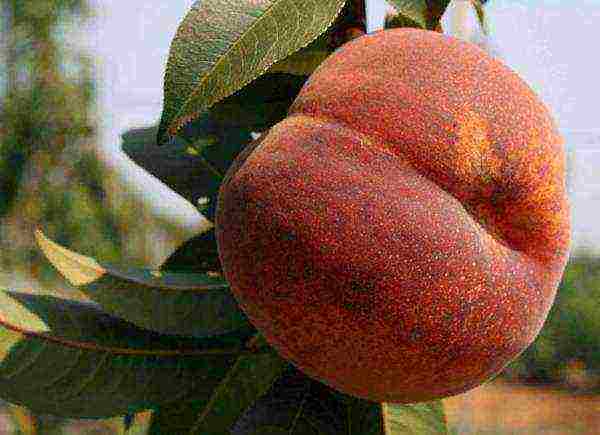 The best varieties of peaches of medium ripening: Collins, Cardinal, Zolotaya Moskva, Sibiryak, Saturn, Kremlevsky, Donskoy
The best varieties of peaches of medium ripening: Collins, Cardinal, Zolotaya Moskva, Sibiryak, Saturn, Kremlevsky, Donskoy
Kremlin peach adapts without problems to changes in temperature conditions, has high winter hardiness. Thanks to this, he attracted the attention of gardeners from regions where summers are cool. With good care, the fruits reach up to 200 g.
Variety Golden Moscow not so long ago appeared on the market, but its seedlings are very popular. The plant winters well and is resistant to diseases, has juicy large fruits.
The fruiting period stretches for almost three weeks.Peach blooms late, after the threat of frost return, and this increases the number of quality fruits.
Sibiryak variety highly regarded by farmers for its excellent transportability. The yellow fruit can be stored in a cold room for up to three weeks. In addition, they are tasty and juicy, and the bone is easily separated from the pulp.
The first crop is harvested in August, and the last fruits are removed in early September.
Peach Saturn stored no longer than 12 days. It's also a lot. The plant has high winter hardiness (up to -27). A strong crown complicates care and this affects the yield.
If the branches are tilted downward, then you can get an excellent harvest every year.
The most winter-hardy representative of this group is peach donskoy... It not only withstands severe frosts, but also quickly recovers after freezing.
The main advantage of peaches of the middle ripening period is high yield, transportability of fruits and excellent winter hardiness of the tree.
Most varieties have a juicy pulp and a pleasant aroma.... A high crown can be regarded as a disadvantage, but with the correct shaping of the tree, it can be easily eliminated and turns into a virtue.
Late, frost-resistant: Fury, Frost, Veteran
Planted a peach, but it does not bear fruit, only intensively increases the crown? Do not be upset: it is better to be patient and wait a little longer.
Late-ripening varieties bear fruit starting at the age of 5 after planting a seedling. They are intended for cultivation in the southern regions. In the North and in the Middle zone, they do not have time to ripen and are sour.
American Fury withstands frosts down to -28 degrees. It is valued for its huge, up to 300 g, orange-colored fruits. The plant is undemanding to care.
The collection of fruits falls in September, when only apple and pear trees are left in the garden. The fruits are stored for no longer than six days.
Frost variety also bred by American breeders, who focused on winter hardiness and large-fruited plants.
The tree gives a high stable yield, withstands frosts down to -26 degrees, and is resistant to diseases. The fruits are used for fresh food. Stored for ten days.
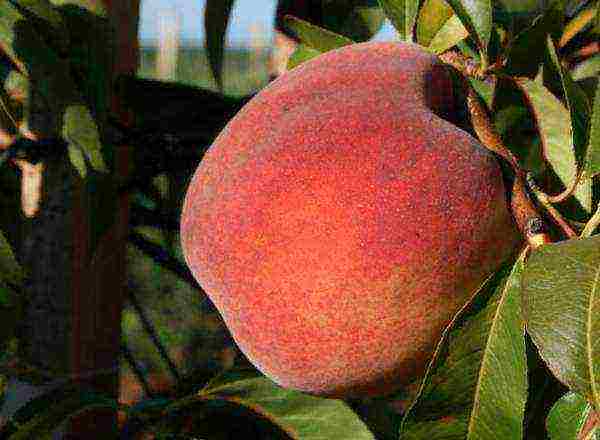 The best late-ripening peach varieties: Fury, Frost, Veteran
The best late-ripening peach varieties: Fury, Frost, Veteran
Veteran grade differs from late-ripening varieties in that it quickly enters the fruiting phase and has a low growth. The size of the fruit is also not impressive (no more than 150 g).
They love it for its good taste. It is ideal for conservation.
Self-fertilized, self-fertile peaches: Inka, Vulcan, Harnas, Golden Jubilee
Self-pollinated varieties are very popular with gardeners. To increase fruiting, it is recommended to plant several plants for cross-pollination... But one tree will also bear fruit.
Among self-pollinated, self-fertile varieties, a good harvest in a single planting gives Inka, Volcano, Harnas, Golden Jubilee.
Harnas belongs to winter-hardy, early-ripening dessert varieties. It is a vigorous tree that bears fruit regularly. Its peculiarity is that the fruits hold tightly to the branches and do not fall off.
Early maturing varieties are distinguished by high winter hardiness of trees and flower buds. They can withstand recurrent frosts. This makes it possible to grow them not only in the southern latitudes, but also in the middle lane, as well as in Siberia and the Urals.
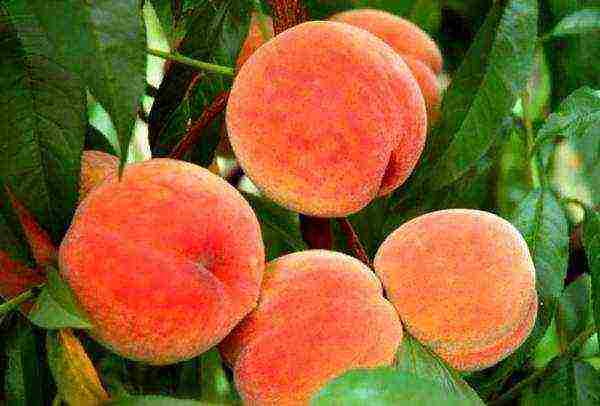 Self-pollinated peach varieties: Inka, Volcano, Harnas, Golden Jubilee
Self-pollinated peach varieties: Inka, Volcano, Harnas, Golden Jubilee
In the regions of Siberia, it is necessary to protect trees from recurrent frosts.
Mid-season varieties build up a decent crown and only then please with a rich harvest. The disadvantage is that it is difficult to form branches, but a regular and generous harvest allows you to turn a blind eye to this.
Mid-season varieties often bent downward to facilitate harvesting.
The lack of late-ripening varieties isthat they can only grow in a certain area.But if climatic conditions allow, then these trees will not only decorate the garden, but also delight you with delicious fruits.
When planting a peach, it should be borne in mind that all varieties bloom very early, when there are still few pollinating insects. You can help the plant by gently shaking the upper branches so that the pollen falls on the lower inflorescences.
Plants respond well to fertilizing and watering... Water plays an important role in the formation of fruits. Its quantity depends not only on the size of peaches, but also on their taste and aroma.
Give your seedlings a little attention and care so that they can turn into beautiful trees and please with the harvest every year.
Gardeners have always strived to grow these juicy, tasty fruits in all regions. The best varieties of peaches have already been bred, corresponding to the annual temperatures of many regions, but breeding work continues and discoveries with new incredible properties await us.
Groups of varieties

The varieties known today, depending on the appearance of the fruit, are divided into four groups:
- Real peach - large fruits of a round shape with pronounced pubescence.
- Nectarine - round, medium-sized, smooth-skinned fruits.
- Potanin's peach - Potanin's almonds. Round, medium-sized pubescent fruits.
- Fergana peach - another name for "fig" because of the flattened shape of the fluffy fruits.
Also, peach trees are distinguished by their ripening times, which depend both on the area and on the variety:
- Early ripe- ripen in late June, early July and bear fruit until August.
- Mid-season - begin to yield crops from early August to September.
- Late ripening- ripen in September, early October.
The choice of plants for the garden should be based on climatic conditions and personal needs. You can concentrate the entire crop in a short time interval, but it is better, by picking up varieties, to collect juicy hairy fruits all summer and autumn.
A good harvest depends not only on the grade, but also on other features that should be considered when choosing seedlings.
- Geography.The nursery from which the seedling arrived must be located in the same climatic zone in which it is planned to grow. Otherwise, diseases and other problems of adaptation are inevitable.
- Quality scion... This is evidenced by an even, smooth place of the scion without sap drips and tubercles.
- A viable root system. One root will not provide the plant with good nutrition. It is better to choose a seedling with a developed fibrous root shape.
When buying seedlings, you should choose annual, healthy and strong plants: they take root well and quickly begin to bear fruit.
The best varieties and their description
Peach trees differ in fruit shape, ripening times and frost resistance.
Early ripe
The peculiarity of these varieties is in the rapid transition to fruiting. The peak yield occurs 4-5 years after rooting, but a small amount of fruits ripens already on 2-3 year old trees. Some plants pick up ovaries even in the first year of planting, but it is better to stop this, the plant needs to get stronger.
Distinctive features of early peach varieties:
- low wide crown;
- flowering in April - May;
- they begin to bear fruit in the fourth year after planting the seedling;
- high yield for 3 months, from July to August;
Each early variety is good in its own way and has features that you need to know when choosing peaches for your site.
Fluffy early
Photo:
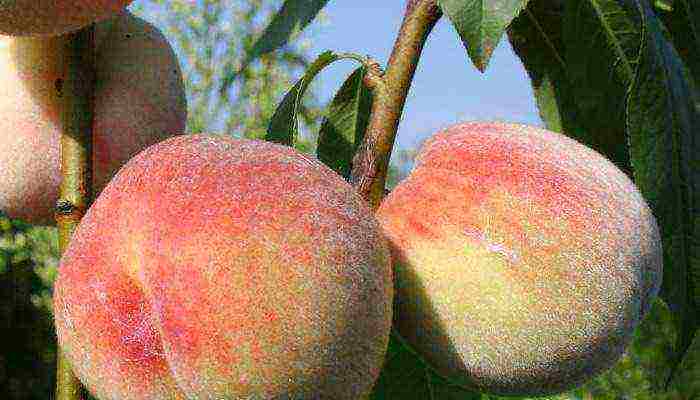
Self-fertile variety with high yields, most suitable for growing in regions climatically similar to the North Caucasus. On trees of medium height, oval-round fruits (up to 100 g) with a barely noticeable seam ripen.
The soft greenish-creamy skin is densely pubescent and covered with a coral blush. Delicate white pulp is filled with sweet juice and a unique aroma. The variety is quite resistant to frost and pests.
Greensboro
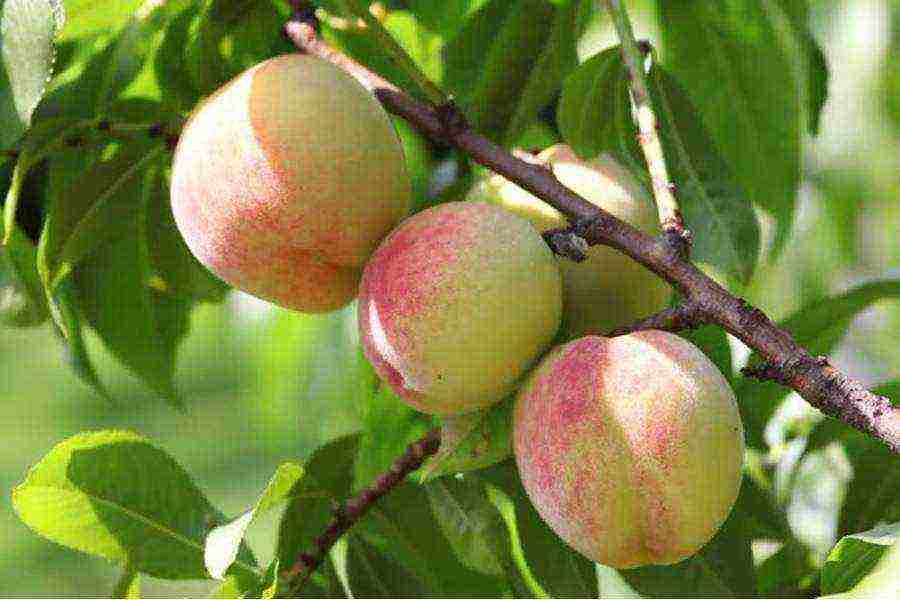
Bred by American breeders. The spreading crown of a vigorous tree gives a large yield of large (up to 120 g) oval-flattened fruits with a refreshing sweet-sour taste and a pleasant aroma of creamy fibrous pulp.
The thick golden-greenish skin is covered with rare burgundy touches. Similar to the Early Fluffy, grows well in the North Caucasian region, frost-hardy, immune to clasterosporiosis. For mid-latitude cultivation, it is recommended to choose windless areas.
Dagestan gold
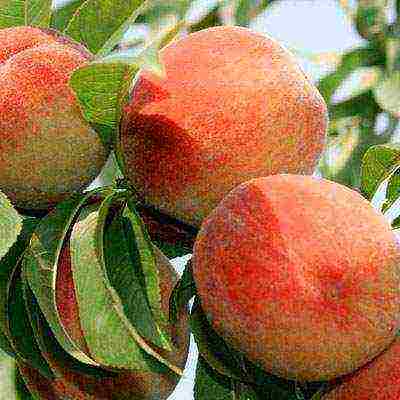
Bred by domestic breeders for Dagestan agriculture. The variety has a stable yield, a spherical crown of a medium-sized tree.
Medium-sized fruits (up to 130 g) have a slightly pubescent saffron skin with a bright blush and an orange-golden, fibrous texture, pulp with a memorable sweet-sour taste and aroma. The plant is frost-resistant, immune to clasterosporium disease and curliness; fruits tolerate transportation well.
Favorite Morettini
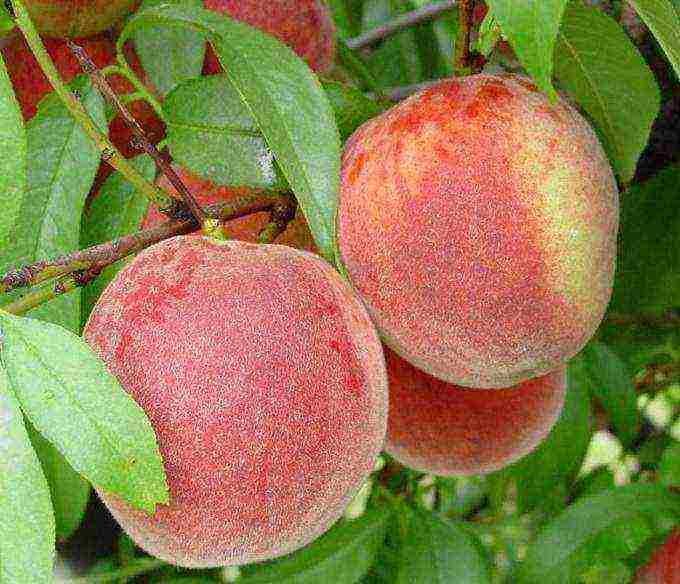
The work of Italian scientists. It is characterized by very early ripening and an unusual shoot growth rate (up to 0.5 m per season). Fruits with juicy, melting in the mouth, pulp reach 150 g with an average yield of about 40 kg per tree. The variety is quite resistant to disease, but does not tolerate frost well.
However, gardeners argue that if the roots of the plant are properly covered for the winter, then it can be grown much further north. Only transported over short distances.
Kiev early
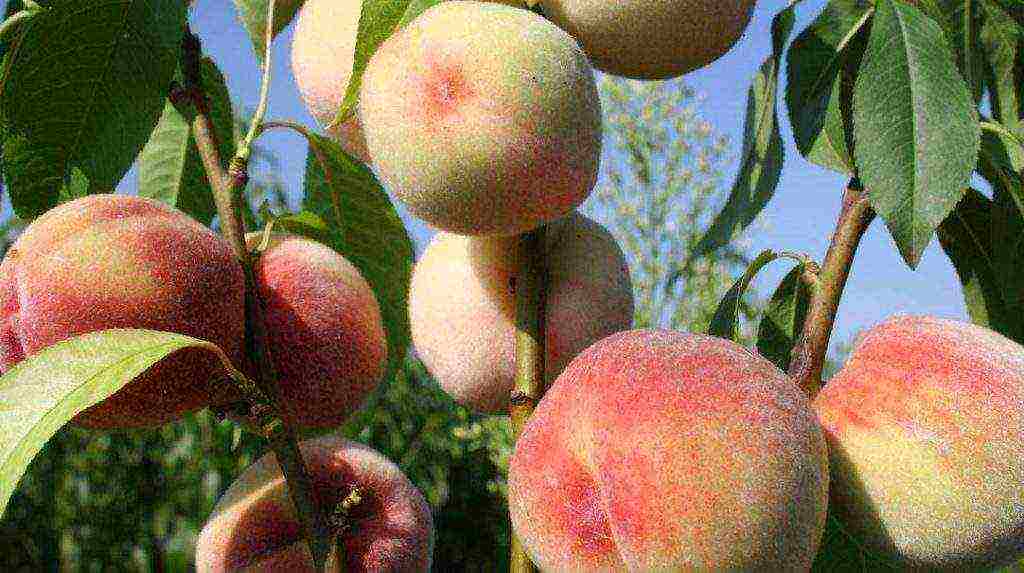
Fruits, ripening in early July, grow up to 100 g and have a sweet, fragrant white pulp. The variety is non-frost-resistant, but a feature is noticed behind it: after a cold injury, recover in a year or two. Also, the susceptibility to powdery mildew is high, although work is underway in this direction to improve varietal characteristics.
White Swan
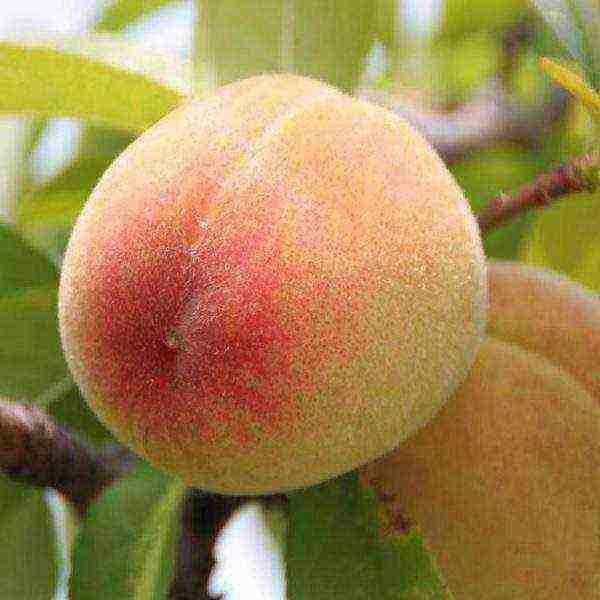
Medium early self-fertile variety with a spherical, not very spreading crown. Fruits up to 155 g, with a creamy white juicy pulp that does not darken on the cut. The pleasant harmonious taste is suitable both for fresh consumption and for various types of processing. High-yielding, disease and drought resistant variety, most suitable for central Russia.
Medium ripening peaches
For early maturing, the baton is picked up by varieties with an average ripening period.
Distinctive features of these plants:
- high trunk with an extensive crown, above 5 meters;
- high productivity;
- frost resistance;
- large fruits.
Many varieties of peaches with medium ripening periods have been bred, among which the favorites stand out: Redhaven, Golden Jubilee, Stavropol Pink, Ambassador of Peace, Hryvnia, Veteran, Ruby Prince, Fig Peach Saturn, Vladimir, Cardinal, Kremlin, Golden Moscow, Sibiryak, Donskoy. They are generally unpretentious and require minimal maintenance.
From peach trees with an average ripening period, the first ripe fruits can be harvested 3-4 months after flowering.
Redhaven
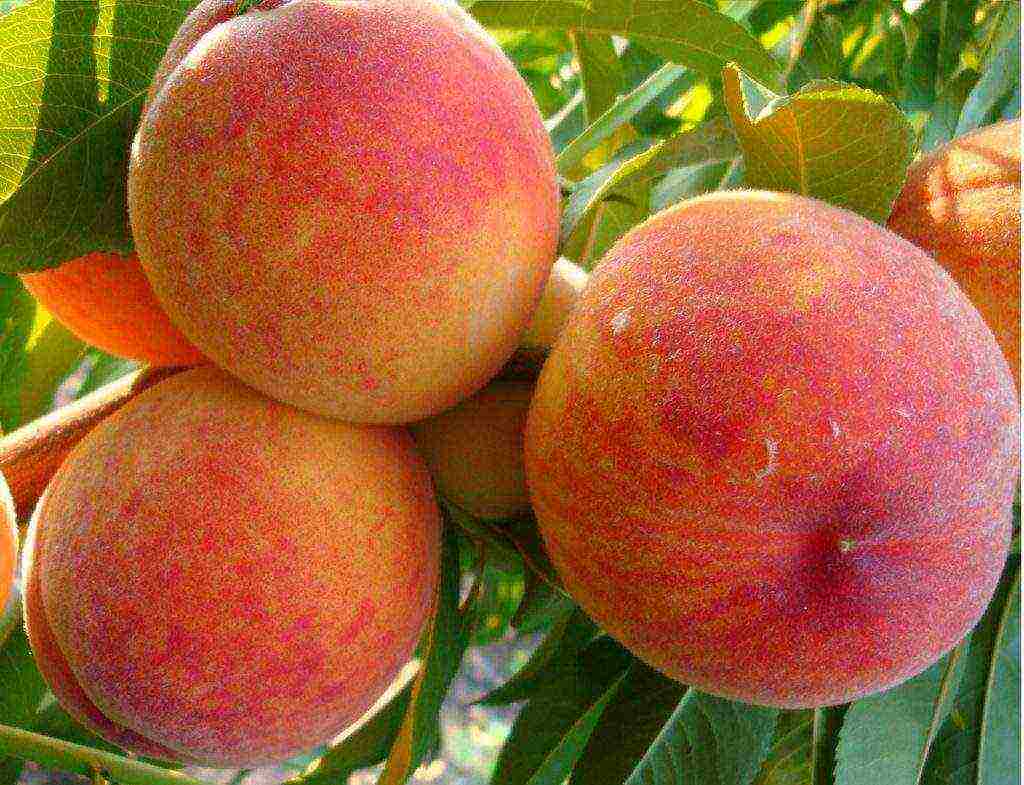
Bred in America. A high-yielding variety with large fruits (up to 170 g), rounded-elongated, golden in color with pomegranate sides and light down. Juicy pale orange, with raspberry veins, the pulp is tasty both fresh and canned. Begins to bear fruit in early August, tolerates drought well, but is moderately resistant to frost and disease.
Golden jubilee
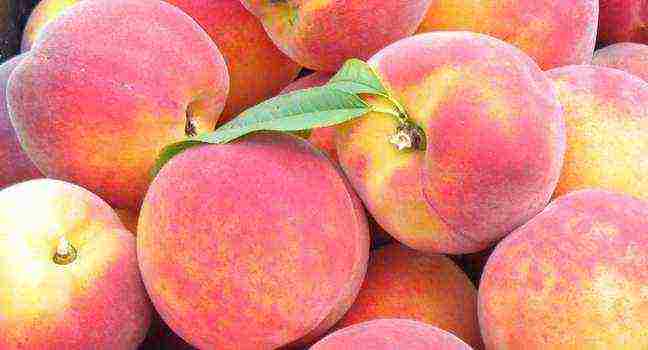
Also American selection. Stably productive variety with spherical large fruits (up to 140 g), covered with golden, thin, slightly pubescent skin with a coral blush. Bright orange fibrous pulp, which turns into cherry at the stone, has a pleasant sweet taste. Resistant to frost and fungal diseases, recommended for the North Caucasus region.
Stavropol pink

High-yielding variety of domestic selection. Derived for the climatic conditions of the foothill and central regions of the Stavropol Territory.Large fruits (up to 140 g) ripen from mid-August and have a delicate pulp with an extraordinary sweet and sour taste with a velvety golden-ruddy skin.
The plant prefers light soils enriched with humus with good moisture, heating and ventilation. It does not tolerate dry seasons, but it is resistant to frost and disease.
Ambassador of Peace

A young high-yielding variety, with large (up to 160 g) saffron-colored fruits with a bright blush and juicy sweet pulp. Resistant to spring frost and fungal diseases.
Hryvnia
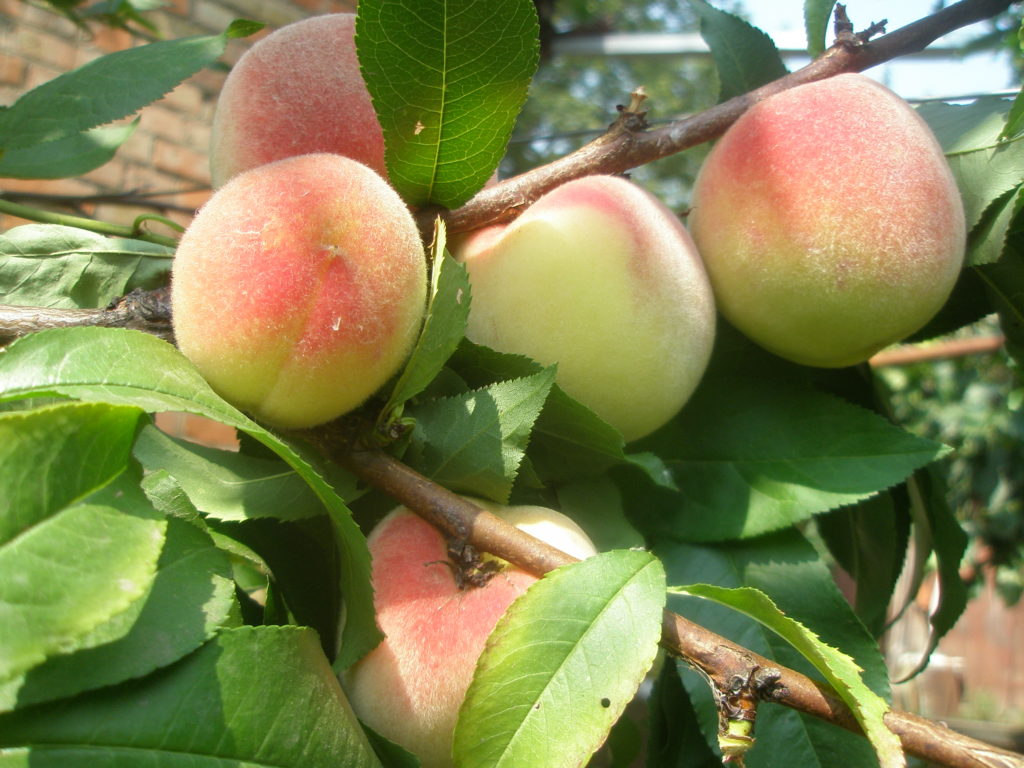
A promising hybrid variety. Small (up to 90 g) fruits begin to ripen in the first decade of September, 2-3 years after planting. Yellow, covered with fluff and striped-blurred blush, fruits with aromatic juicy pulp tolerate transportation well. Winter hardy, resistant to powdery mildew and curliness.
Veteran

Canadian selection in 1925. High-yielding and very frost-hardy. The first large fruits (up to 130 g) begin to ripen 3 years after planting, have excellent taste, good transportability and disease resistance. Thanks to such varieties, gardeners in regions with cold climates have the opportunity to grow this traditional southern fruit.
Ruby Prince
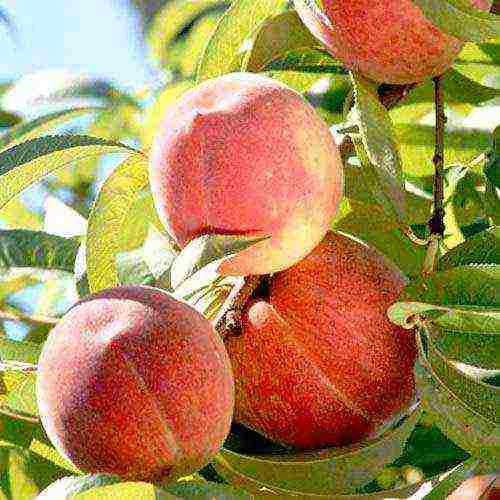
A variety of American selection. The name of the variety speaks for itself: a high yield of fleshy, juicy, large (up to 300 g) fruits with bright yellow pulp and sweet and sour taste, begins to ripen in the second half of July. This variety is commercially attractive due to its good transportability and long-term retention of presentation.
Fig peach
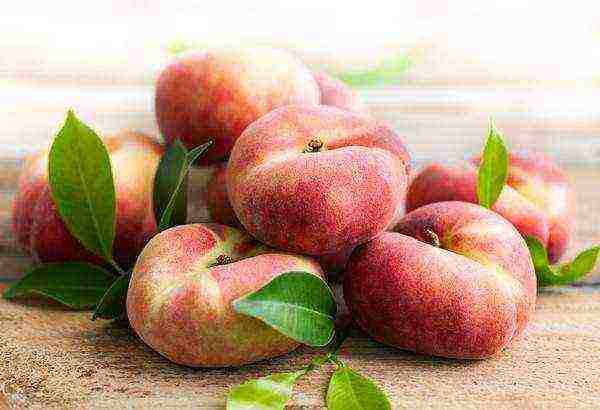
A relatively young form. It entered Europe at the beginning of the 19th century, but did not receive wide distribution, although its qualities are in no way inferior to the usual varieties.
High-yield, frost-resistant, with a small bone and flattened fruits, varieties are compactly packed and perfectly transported, but not endowed with long-term storage.
The most popular varieties are: Vladimir and Saturn. The first is characterized by large bright fruits (up to 180 g) with juicy sweet pulp, the second has medium-sized fruits (up to 100 g), cream-colored with white fragrant sweet pulp, which changes the taste near the stone.
Cardinal
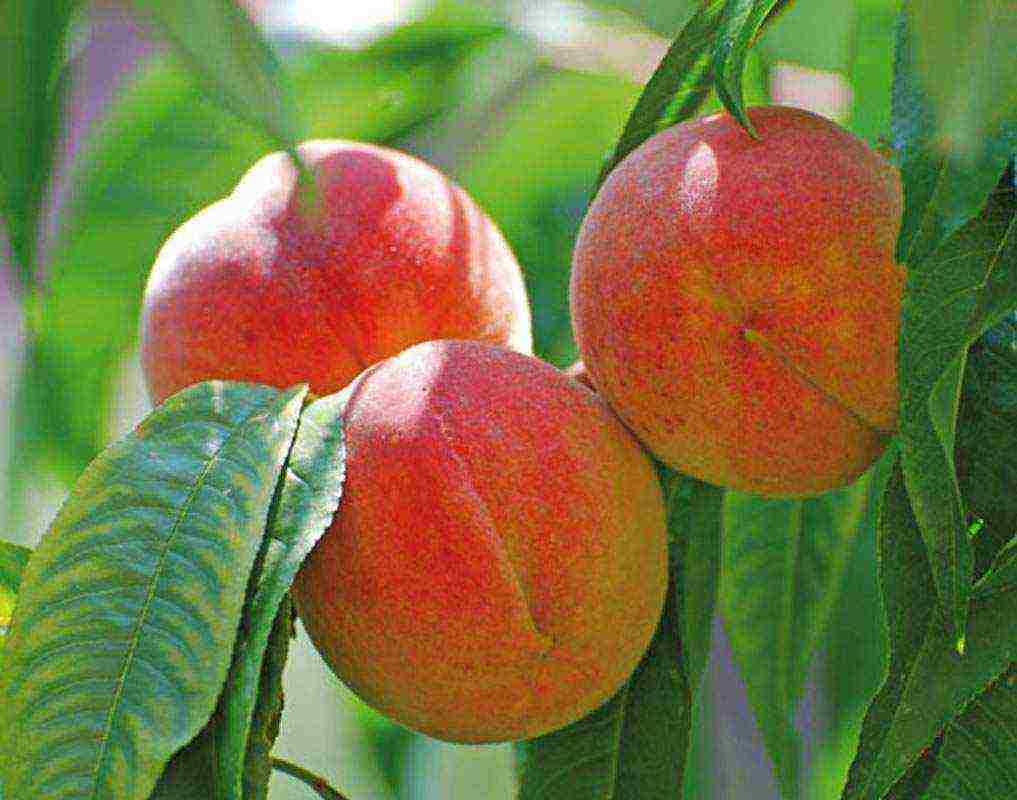
One of the best varieties in terms of taste. On the international tasting scale, he won the highest mark - 5 points. Large fruits (up to 150 g) of a rounded slightly flattened shape with an orange-yellow pulp and a characteristic blush. It is resistant to diseases, but does not tolerate recurrent frosts. It is better to plant it away from water, in a calm place, next to a wall or fence.
Kremlin peach
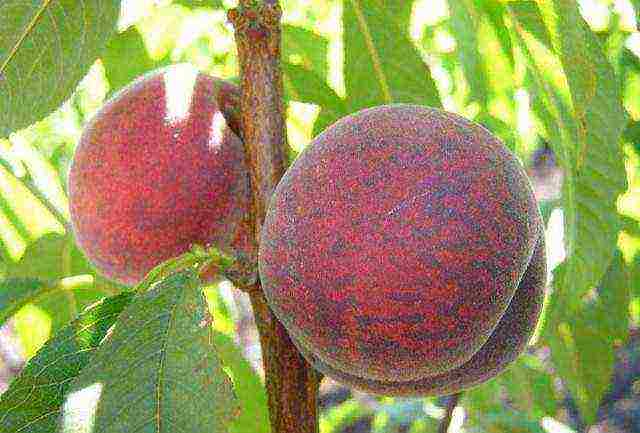
Domestic selection. Easily adapts to any soil and weather conditions, resistant to frost, drought and disease. Large fruits (up to 200 g) with an average juiciness and a pronounced peach aroma are covered with a yellowish-orange skin with a red blush. Recommended for regions with cool climates.
Golden Moscow
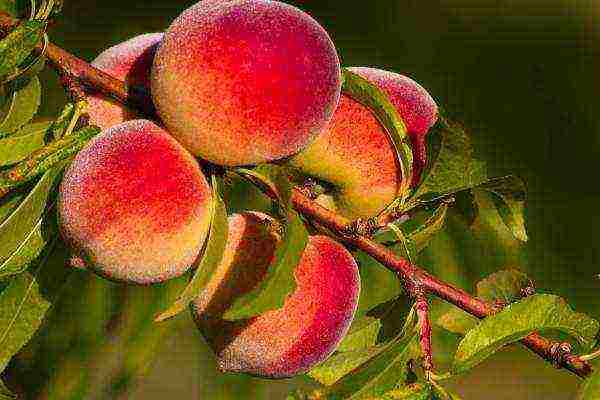
Bred in the Nikitsky Botanical Garden. Large fruits (up to 180 g) of broadly oval shape with dots, strokes and slight pubescence on ripe ruddy fruits. Sweet pleasant taste with mild sourness, estimated at 4.8 points. Due to late flowering, it is not affected by return frosts, which increases productivity.
Siberian

Created by specialists of the Nikitsky Botanical Garden. It is highly valued for its long shelf life, good transportability and disease resistance. Fruits up to 130 g in size have a juicy, yellowish, densely fibrous, sweet pulp. The pubescent yellow skin is covered with a bright blush on the sunny side.
Donskoy
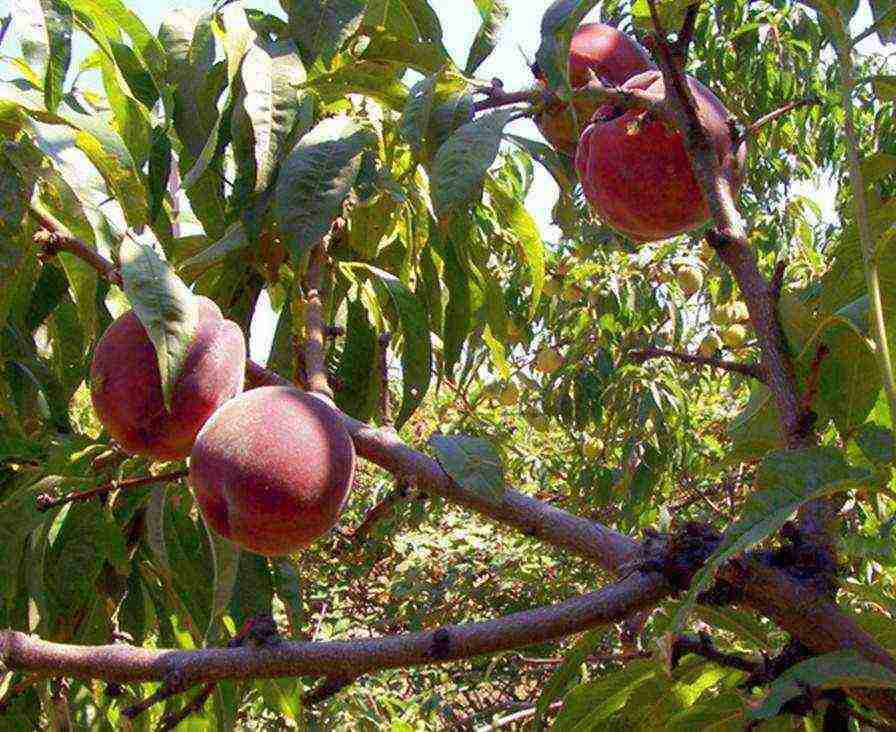
The most frost-resistant variety in this group. Even after severe frost, it retains the ability to recover. The fruit with a transparent, white, dense pulp, sweet taste with a slight pleasant sourness, is estimated by tasters at 4.5-4.6 points.Disease resistant.
The main advantages of peaches of the middle ripening period are high yields, transportability and cold resistance.
The best varieties of late, frost-hardy peaches
Far-sighted gardeners prefer late varieties with exceptional taste and long shelf life.
Late-ripening varieties begin to bear fruit by the fifth year after planting the seedling. They were bred for cultivation in the southern regions. In the Central lane and in the North, these varieties do not ripen and remain sour.
Jaminat
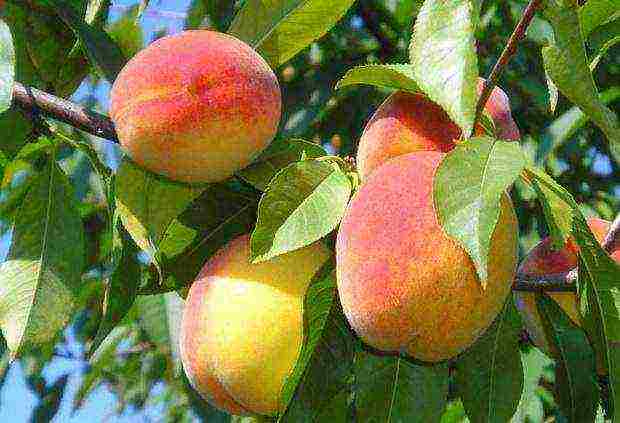
The work of Dagestani scientists. A fast-growing, medium-late, frost-resistant variety with good immunity, ripening at the end of September. Large (up to 160 g) oval-flattened fruits with bright orange pulp of a delicate pleasant taste in a golden thin skin. Covered with light fluff and streaks of blush.
Elbert
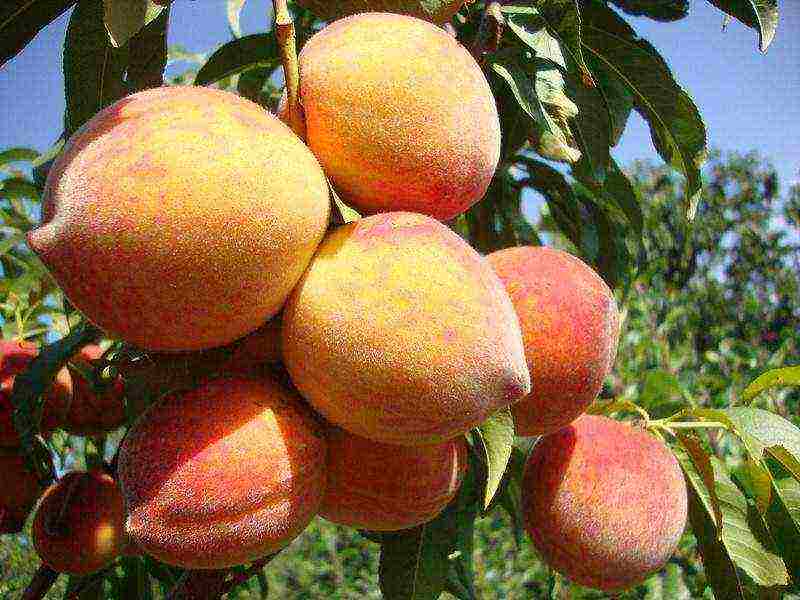
A fast-growing, late-ripening variety of American selection. On vigorous spreading trees, large (up to 150 g) fruits ripen with a velvety golden-ruddy elegant skin and a fresh sweetish-sour taste. High-yielding, frost-resistant with excellent immune qualities.
Irganai late
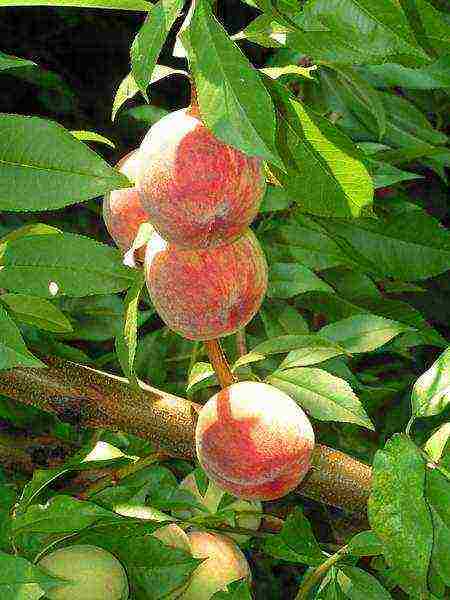
High-yielding variety of Dagestan selection. Large or medium (120-160 g), depending on conditions, one-dimensional fruits ripen by mid-September. The bright yellow delicate sweet-sourish pulp is covered with a thin skin with touches of pomegranate-orange flowers. It is transported without loss, stored for up to 10 days.
Fury
American selection. It tolerates frosts down to -29 ° C, has large (up to 300 g) orange fruits. The tree does not require increased maintenance. The harvest falls in September and is stored for no longer than a week.
Frost
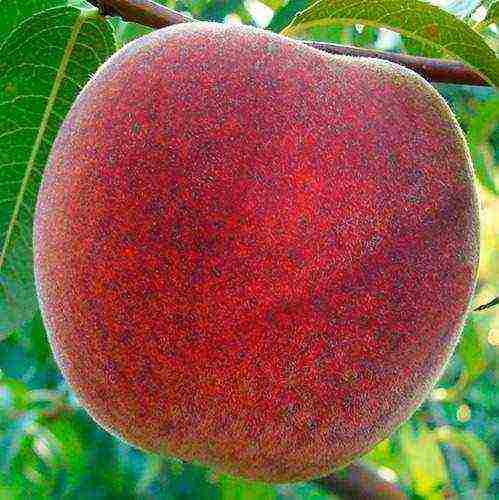
Properties similar to the previous variety. Winter-hardy, large-fruited plant with a consistently high yield and good disease resistance.
Veteran
Drops out from a number of late-ripening varieties for several characteristics:
- fast fruiting phase;
- small growth;
- medium-sized (less than 130 g) fruits.
However, its excellent taste and ideal size for preservation make it a favorite of many gardeners and the food industry.
Champions of frost resistance
The first peach trees were certainly thermophilic. But in recent decades, scientists have developed new varieties for cultivation in cold regions as well.
Now you can buy seedlings of plants that can withstand temperatures down to -30 ° C without significant damage.
Vavilovsky
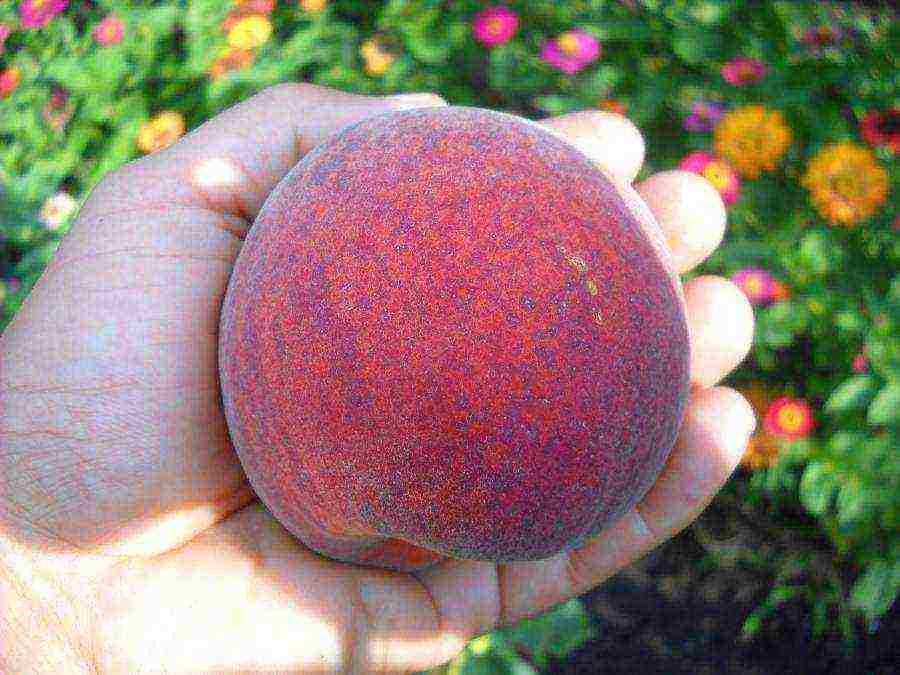
The variety is a mid-early variety of the Crimean selection. It perfectly tolerates low temperatures, return frosts and is resistant to most diseases. A high yield of large (up to 250 g) fruits has an elegant appearance and a pleasant sweet-sour fresh taste.
Fluffy early
The most famous type of domestic selection of this subgroup. Withstands frosts down to -30 ° C, suitable for jams, preserves, canning and fresh consumption.
Juicy
An early frost-resistant species of Russian production. The plant is not afraid of thirty-degree frosts, powdery mildew and curly leaves. Medium (up to 130 g) juicy, fragrant fruits with white pulp and unique taste are so numerous that some have to be removed in the ovary in order to preserve the tree.
Winter hardy
The homeland of the variety is in Ukraine. Withstands freezing down to -40 ° C with subsequent full recovery. A high-yielding variety with large (up to 200 g) tasty sweet fruits. It is recommended to plant at a distance the rest of the stone fruit species.
All peach varieties of this subgroup are bred for cultivation in regions with a short summer and a long cold season.
Self-fertilized, self-fertile peaches
Self-pollinated varieties are very popular among gardeners. To increase productivity, it is recommended to plant several plants together, and in calm flowering seasons and in the absence of pollinating insects, use various manual methods of pollination.
But single trees can also please with high fruiting, these include:
- Inca,
- Volcano,
- Harnas,
- Golden jubilee.
In Siberia, these varieties should be protected from recurrent frosts.
Plants respond gratefully to watering and feeding. The availability of sufficient water during the period of fruit formation has a decisive effect on the size, taste and even aroma of the fruit.
Take care of the seedlings, and turning into adult, healthy trees, they will certainly thank you for your attention with a generous juicy harvest.
Just ten years ago, the peach was considered a curiosity in the front garden. And it is not surprising, because this culture is quite capricious, and is mainly suitable for planting in southern climatic conditions. But thanks to breeders, today it will not be difficult to acquire and plant a suitable variety, even in relatively cold regions of residence.
The main thing is to choose the right variety. So, what are the best varieties of peach bred and how to choose the right type for growing in a certain region and consider below.

What are the varieties of peaches
Peach is a thermophilic culture and the vast majority grows in the warm regions of our country. But as described above, today you can easily choose a variety that can grow even in places where summers are cool and winters are harsh. To do this, you just need to choose the right variety.
At the moment, all varieties of peach crops are classified according to the following criteria:
- early maturing varieties that are suitable for planting in southern latitudes;
- mid-season varieties, ideal for areas where summers are cool and winters are fierce;
- late varieties of peaches are most often planted in temperate latitudes.
Well, now it's worth taking a closer look at each of the types of peach crops, and finding out which representatives are the best for planting and growing.
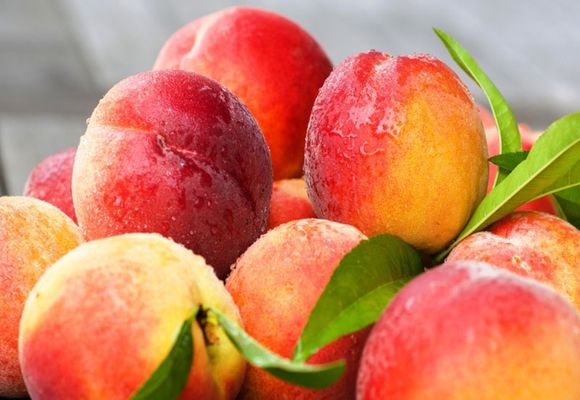
The best early ripening varieties
Quite often, novice gardeners are interested in what kind of early peach is it? In this case, an early peach variety is considered to be the one that begins to bear fruit literally 3 months after flowering. As a rule, harvesting from these varieties begins as early as July.
Today there are a lot of different varieties of this culture, which is able to delight with the harvest already literally at the end of June, but the following types are considered the best:
- peach Fluffy early;
- peach Dagestan gold.
Fluffy early
The fluffy early peach variety has many advantages, such as:
- high productivity;
- self-fertility of the tree;
- good frost resistance;
- excellent taste;
- incredible fruit aroma;
- disease resistance.
As for the tree itself, it is distinguished by a relatively low growth and a powerful spreading crown. The fruits of this species are relatively low in weight, but at the same time, up to 70 kg of tasty and juicy peaches can be removed literally from one tree.
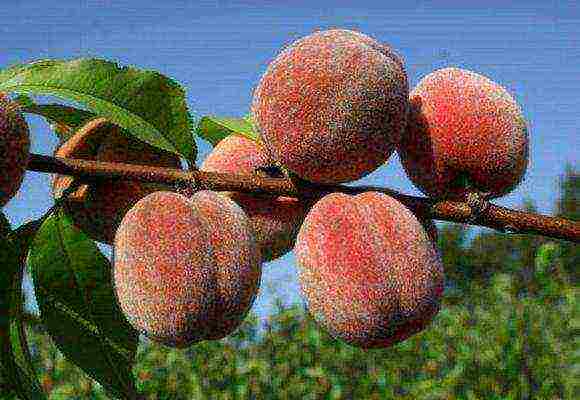
Dagestan gold
This peach is very popular due to its many excellent characteristics, namely:
- early ripening of fruits: you can enjoy fruits already at the beginning of July;
- a good harvest can be removed as early as 4 years after planting;
- fruits are large, weighing up to 140 grams;
- the fruit is very juicy, sweet and slightly sour to taste;
- this variety is highly resistant to curliness and clasterosporium disease.
In addition, it should be noted that the tree itself is medium-sized and has a powerful crown. And also among the advantages of this variety can be attributed the fact that the culture is resistant to frost and is able to please with a good harvest even in temperate climates and regions with harsh winters.
It is worth noting that today new varieties of peach crops appear regularly, which also have a lot of positive characteristics. But above we have described exactly those species that are very popular in our homeland.
Mid-season varieties
For mid-ripening peach varieties, the following point is characteristic: you can remove the fruits from such varieties 125 days after flowering.
Therefore, if you are a novice gardener and prefer just such a culture, be prepared for the fact that you will be able to taste peaches only by August.
Well, as for the best varieties, there are several of them, namely:
- peach redhaven;
- peach variety Golden Jubilee;
- and Stavropol peach.
Redhaven
The peach species Redhaven was born thanks to American breeders who endowed it with the following characteristics:
- the fruits are large and reach a weight of about 170 grams;
- the fruit tastes very juicy and sweet;
- peaches ripen by the beginning of August;
- drought resistant;
- transportable and lying, due to which this variety is often grown on an industrial scale.
As for the peculiarities of this culture, Redhaven can hardly endure severe frosts, but if the culture is properly covered, it will easily please the next year with the harvest. It is also worth highlighting that this variety has an average resistance to powdery mildew.
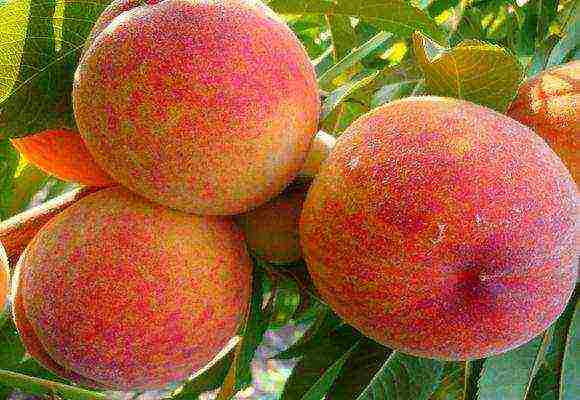
Golden Jubilee
The Golden Jubilee peach variety also appeared thanks to American breeders. This variety has the following characteristics:
- large fruits, weighing up to 150 grams;
- delicious taste;
- this variety can be used both for fresh consumption and for conservation;
- high yields, so literally up to 90 kg of fruit can be removed from one tree.
The main advantage of this culture is that it is not afraid of severe frosts and is very resistant to infections of fungal origin.
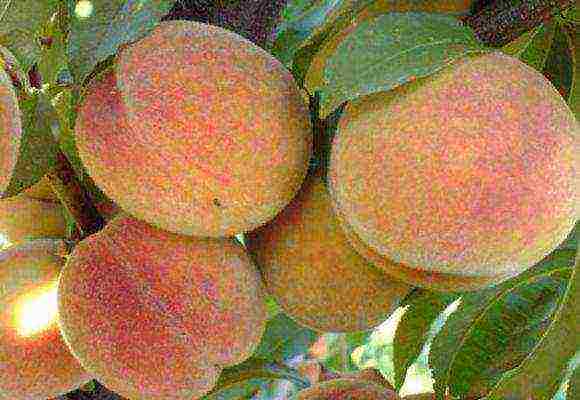
Stavropol
And the last grade of the mid-season peach variety is Stavropol. This species is the pride of domestic breeders. Judge for yourself: a peach is endowed with the following characteristics:
- the yield from one adult tree reaches up to 120 kg of tasty and very sweet fruits;
- not afraid of even harsh winters;
- resistant to many diseases, including powdery mildew;
- fruits are large, weighing up to 150 grams;
- you can remove the fruit at the end of July.
In general, the Stavropol peach is the most popular among many gardeners today. The only thing you need to grow it is to choose the right soil. The land should be fertile and rich in moisture and humus. As this species does not tolerate drought.
It is worth highlighting one point: if you are just planning to purchase peach seedlings, then try to make a purchase only in well-known nurseries that are located in your region.
Only then can you be sure that you have purchased a really good variety.
The best late-ripening species
If you are interested in a late-ripening peach variety, then in this case the breeders have done a great job. To begin with, it is quite profitable to grow just such varieties. First of all, late-ripening varieties are distinguished by delicious taste, keeping quality of fruits, good transportability and especially large fruits.
And such varieties begin to ripen mainly in September. It should be noted that there are varieties that delight with a ripe harvest even in October.
So, the best late varieties of peaches:
- peach variety Jaminat;
- the best variety of our time Elbert;
- and a universal late Ingaraisky species.
It is worth highlighting that all three varieties described above were selected as the best for a reason. The fact is that it is they who are most popular with gardeners, even despite the regular breeding of new peach species by breeders.
Peach Jaminat
This variety appeared thanks to the efforts of Dagestan breeders, which endowed the culture with the following positive qualities:
- large fruits, weighing about 170 grams;
- honey taste;
- frost resistance;
- good immunity to curliness and klyasternosporiosis.
As for the tree, it does not grow very tall, while the crown is powerful and spreading. One of the main advantages of this variety is that it pleases with high yields annually. So, literally from one culture, you can take about 90 kg of delicious peaches.
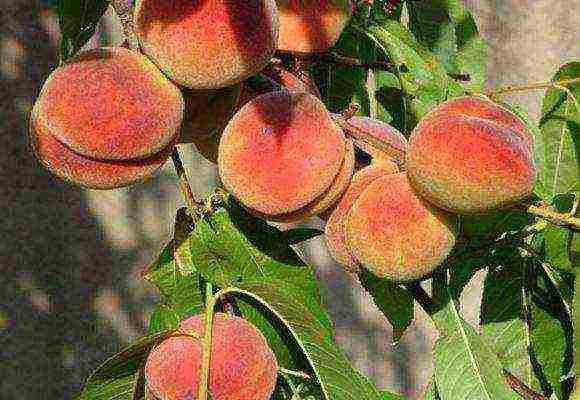
Elbert
The next grade is considered to be the best by right. The fact is that Elberta is endowed with unique characteristics, namely:
- fruits are very fast;
- peaches of this variety can be transported without difficulty for a whole week;
- by weight, the fruits reach 160 grams;
- the tree itself is very tall with a spreading crown;
- the average yield from one tree can be up to 160 kg;
- high rates of resistance to disease and frost.
It is worth noting that Elberta has enjoyed immense popularity for decades. And today, despite the wide range of peach varieties, most often gardeners make a choice in favor of Elberta.
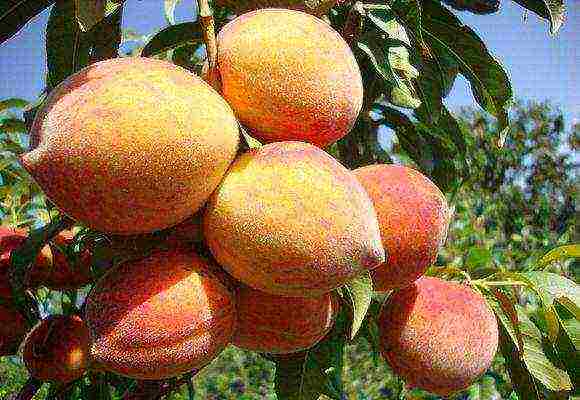
Irganai late
And the last variety, which also deserves your attention, is Irganaysky late. The main advantage of this species is its high yield rates even in a cold climatic zone. In addition, the peach of this variety has many more undeniable advantages, namely:
- large fruits, weighing up to 160 grams;
- very sweet in taste;
- high yield rates;
- lend themselves well to transportation;
- keeping time is approximately 2 weeks without losses.
It is also worth highlighting that this variety of peaches is capable of producing regular harvests from literally one tree to 130 kg of delicious and very juicy fruits.
So, we have considered the most popular types of peach crops, which delight with good harvests in September. But this article would be incomplete without a description of varieties that withstand frost well.
What types of peaches are not afraid of frost
As a rule, almost every experienced gardener grows a peach crop, and growing nectarines is associated with warm edges. But thanks to the tireless work of an army of breeders, peach varieties have emerged that can be successfully grown in cold regions.
As a rule, the buds of such cultures do not freeze even at a temperature of -25 ° C. And semi-opened buds can easily withstand temperatures down to –8 ° С. winter-hardy species, even with particularly severe frosts, may suffer slightly.
Such varieties that are able to withstand even a strong drop in temperatures include the following:
- late variety Vavilovsky;
- peach variety Juicy;
- and the last widespread type called Fairy Tales.
Peach Vavilovsky
It was bred by Crimean breeders for growing it in the most severe climatic conditions. But, in addition to the fact that this culture tolerates severe frosts well, it is also endowed with many excellent qualities, such as:
- large fruits reaching a weight of about 250 grams;
- the peach tastes very sweet and has an incredible aroma;
- endowed with excellent immunity to many diseases;
- lends itself well to transportation;
- has high keeping rates;
- excellent for preservation.
And it is also worth highlighting that literally from one tree you can remove up to 130 kg of large and tasty fruits.

Juicy
The next variety that also deserves your attention is called Juicy. The tree of this variety grows vigorous, with a powerful and spreading crown and has the following positive characteristics:
- fruits are large, weighing up to 200 grams;
- peaches are excellent in taste with a slight sourness;
- the culture is resistant to frost and fungal diseases.
In general, it is worth highlighting that this variety is very popular and can be most often found in regions of our country with a cold climate.

Story
And the last variety, which is also popularly loved, is called the Fairy Tale. This variety appeared thanks to the Crimean breeders. This culture was endowed with the following indicators:
- fruits are large, weighing up to 180 grams;
- medium-sized trees with a compact crown;
- on average, up to 85 kg of fruits can be harvested from one tree;
- peaches taste very sweet and aromatic;
- the tree is resistant to severe frost;
- the culture is not resistant to powdery mildew.
The fruits of this crop are well suited for conservation. Therefore, it is from a fairy tale that jams, jams and compotes are most often prepared. And one more advantage of this culture, which is worth writing about: the fairy tale peach takes root well even in the most severe climatic zones. For this reason, today this variety can be found almost everywhere.
So, above we have considered the best varieties of peach culture. Naturally, breeders do not rest on the laurels of the winners, but regularly work on the creation of new and unique varieties. But we'll talk about this in the next article.
Until recently, peaches were favorite overseas guests, growing them in a humid, cool climate seemed impossible. However, the early varieties bred allow peach to be grown in almost any climate with different weather conditions and ambient temperatures. Early peach varieties, their features, as well as the secrets of selection will be described below in the article.
What is special about early peach varieties?
Almost all early peach varieties have yellow flesh, apart from some fig subspecies. Their taste is sweet, delicate, despite the general opinion that early peaches are sour and not juicy. Fruits weighing about 200 g. Ripening of early varieties begins in mid-June (15-20) and lasts until 15-20 July.
What are the best early varieties? 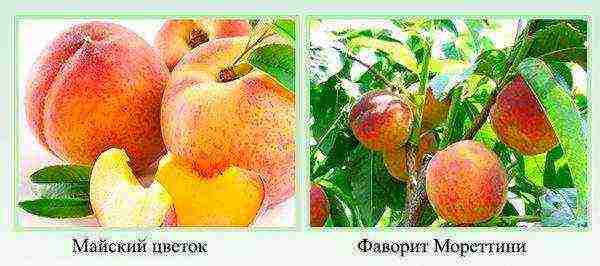
The best early varieties of peach 1
There are very few early peach varieties that would survive without an abundance of heat. Although breeders breed new species every year, their quality sometimes does not meet expectations. Only the best varieties that have been successfully tested by gardeners in different parts of the world over the years will be described below.
- "May flower", it is also "Mayflower" one of the earliest varieties - ripens from 7 to 15 June. Bred in America, it is very resistant to low temperatures. It can withstand frosts down to -20 degrees, but it is advisable to insulate the tree for the winter so that it does not freeze at lower temperatures. Fruits 130 g each, slightly pubescent, yellow with a red flank. The pulp is light with a green tint, juicy, sweet with sourness.
- "Favorite Morettini" - the standard of an early ripe peach. The fruits can be eaten as early as June 10-15 - at the latest in early July. The plant gets along well in the middle climatic zone. The fruits have a mass within 150 g, dark pink. In some years, up to 40 kg of fruits are harvested from the tree. The pulp is juicy, sweet and aromatic. The tree is resistant to most diseases and pests, but does not like strong frosts, therefore it is recommended to warm it for the winter.

Best Early Peach Varieties 2
- "Juicy" is an almost flawless variety. It ripens until July 15. It is the best in terms of resistance to cold. It can withstand temperatures up to -30 degrees without insulation. In addition, it is resistant to powdery mildew, is not affected by curliness. The branches of the tree grow and develop quickly even after heavy pruning, so that the harvest can be obtained in the shortest possible time. The yield is high, even very, in some years it is required to remove excess fruits so that the branches do not burst from the load. The pulp is white, juicy, aromatic. Fruits 130 g each, almost round. The variety is suitable for a beginner gardener, as it is completely undemanding in care.
- "Kiev early" ripens in early July. Fruits are small, up to 100 g. The pulp is sweet and smells strong, light. Among the shortcomings, one can single out a weak resistance to severe frosts and powdery mildew. Therefore, it is recommended to plant in the southern or middle climatic zone. At the same time, it is distinguished by an increased level of growth, it quickly recovers after pruning.
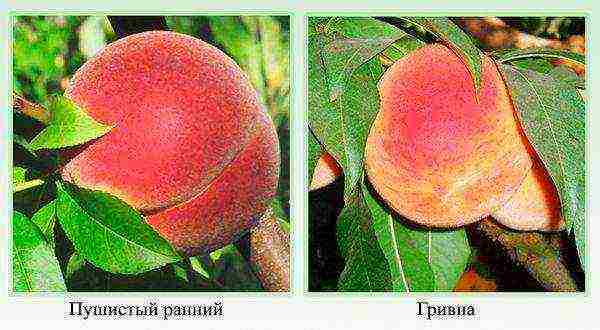
Top 3 Early Peach Varieties
- "Fluffy early" can be eaten on the 15th of July.Withstands frosts down to -30 degrees Celsius, is not afraid of powdery mildew. Fruits of 110 g, do not differ in high taste, but are indispensable for canning (they do not fall apart in cans, they retain their shape). It gives a high yield with proper care and timely pruning. Of the shortcomings, it is worth highlighting that the leaves are often affected by curliness.
These are the most popular early peach varieties, but besides them there are others, less well-known, but no less tasty. Gulia, Pink Peach, Francoise, Rich May, Harrow Diamond ripen from mid-June. Candor, Spring Lady, Rich Lady, Sentry, Sweet Shasta - ripen in early to mid-July. The disadvantage of these varieties is that they were bred in the USA, France and Canada, and therefore they can take root badly in the Eastern European climate, and it is very difficult to find these varieties.
What do experts advise when choosing a variety and planting it?
Peach spraying schedule
- Growing early peach varieties is very difficult in cold areas, so choosing a variety can either simplify or complicate the task. When choosing a variety, you must first of all pay attention to its survival rate in a certain area. Not all early varieties can mature under extreme conditions. For this, only those hybrids are suitable that tolerate frosts and sudden drops in temperature well.
- The main criteria when choosing a peach variety for the northern and middle lane: frost resistance, rapid growth of shoots, resistance to diseases and pests.
- When a seed is planted, it is important not to buy it separately, but to extract it from the fruit yourself. This will reduce the risk of marriage, and the variety will be known for sure.
- The planting material must be local. If seeds for planting or a tree were grown in warm regions, they will not take root in temperate climates.
- If a seed is used as a planting material, it is necessary that the fruit from it be healthy without damage and rot. Also, it is extremely important to plant several seeds in one hole. The more it rises, the better, in this case, reinsurance is necessary.
